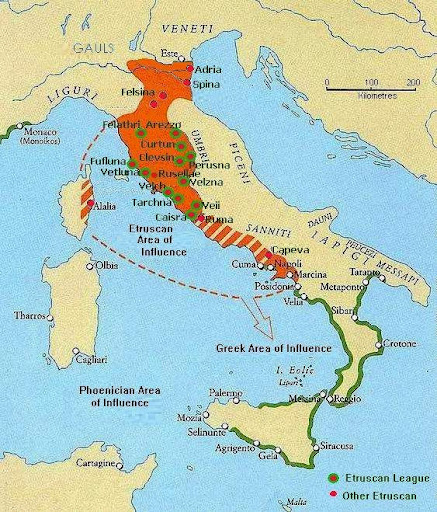The Ligurians represent quite a bit of a problem. Some people consider them to be non-Indo-European, but evidence for this is scanty. Others consider them to be Celtic, but there is the danger of circular reasoning because the Ligurians were clearly Celtic-influences: if you say that all Celtic naming influence with the Ligurians was foreign, then it stands to reason they were a non-Celtic people. If you say that the naming influence was indigenous, then it stands to reason that they spoke a language akin to Celtic. The big problem with the Ligurian language is that we have only onomastics (place names, etc.), and no Ligurian inscriptions.
If however the Ligurians were speakers of an "Italo-Celtic" language (in the wider sense, just like Lusitanian or Venetic), and if R1b-U152 is both Italic and Alpine Celtic, then it's certainly likely that the Ligurians too were to a considerable degree carriers of U152. However, I admit that these are two big "ifs".
Regarding Greek influence on the Ligurians, this was without a doubt also the case. In fact, the Greeks probably had contact with the Ligurians before they had contacts with the Celts.





